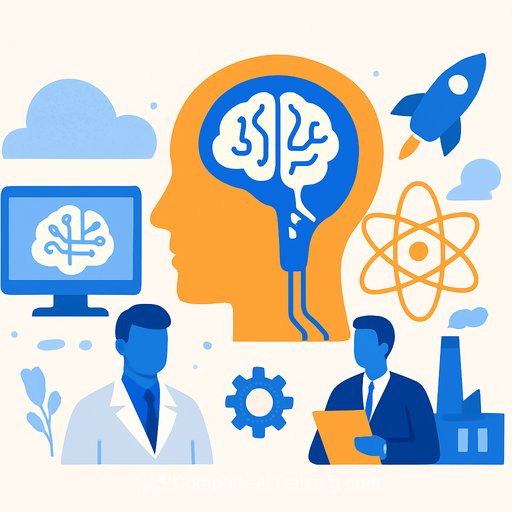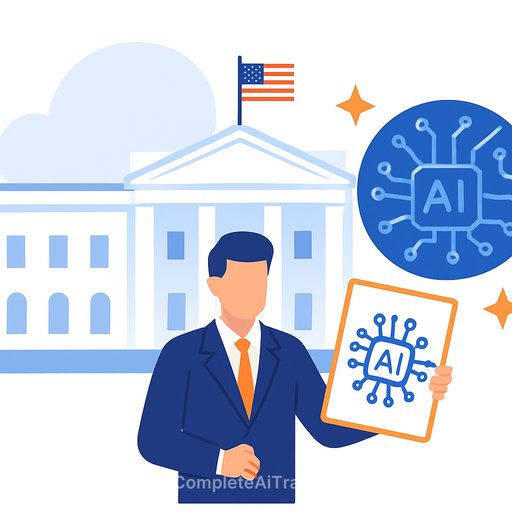Explained: Project Genesis - The US Government's "Manhattan Project" for AI
On November 24, 2025, US President Donald Trump launched the Genesis Mission via Executive Order, tasking the Department of Energy (DOE) with building a unified national platform for AI-driven scientific research. The Secretary of Energy will run the mission inside DOE, while the Assistant to the President for Science and Technology (APST) coordinates work across federal agencies.
The aim: consolidate federal scientific datasets, national lab compute, and partnerships with industry and academia into one integrated AI system. The first focus areas are clear-energy dominance, discovery science, and national security.
What the Executive Order Does
The DOE will stand up an integrated research platform capable of training scientific foundation models, generating AI research agents, and accelerating discovery across disciplines. Officials frame this as a modern national-scale science effort anchored in DOE labs and HPC infrastructure.
As US Secretary of Energy Chris Wright put it, "From the Manhattan Project to the Apollo mission, our nation's brightest minds and industries have answered the call." The mission will bring together supercomputers, data resources, and lab capabilities to push US leadership in AI-driven science.
The American Science and Security Platform
At the core is the American Science and Security Platform-a unified national research system built and managed by DOE. It will combine DOE supercomputers, advanced networking, and secure cloud-AI environments into a single compute layer.
The Platform must provide AI modeling frameworks and agents to explore design spaces, automate workflows, and support iterative experimentation. It will deliver predictive models, simulation tools, design-optimization systems, and domain-specific foundation models across priority fields.
Data Access and Safeguards
The Platform must enable secure access to proprietary, federally curated, open, and synthetic datasets. Access must align with classification rules, privacy protections, intellectual-property rights, and federal data standards.
DOE is also responsible for meeting national security expectations, supply-chain integrity requirements, and federal cybersecurity rules.
Build-Out Timeline
- Within 90 days: Identify available federal compute, storage, and networking resources.
- Within 120 days: Present initial data assets, model assets, and a plan to incorporate datasets from approved research institutions and industry partners.
- Within 240 days: Review national lab capabilities for robotic laboratories and AI-augmented manufacturing.
- Within 270 days: Demonstrate initial operating capability for at least one designated science and technology challenge.
Prioritizing National Science and Technology Challenges
Within 60 days, the Secretary of Energy must submit at least 20 AI-accelerable challenges to the APST. These must span advanced manufacturing, biotechnology, critical materials, nuclear fission and fusion, quantum information science, and semiconductors or microelectronics.
Within 30 days of receiving that list, the APST-working through the National Science and Technology Council (NSTC)-will coordinate a refined set of priorities. Agencies will then use the Platform to pursue research aligned with those challenges, subject to law and available funding. The list will be reviewed annually to reflect scientific progress and national needs.
Coordination, Partnerships, and Accountability
The APST will guide participating agencies through the NSTC to keep programs, datasets, and infrastructure aligned with the mission. Agencies must identify and integrate relevant datasets into the Platform and participate in coordinated funding calls or prize competitions to avoid duplication and improve interoperability.
DOE, working with the APST and other advisers, will establish uniform frameworks for collaboration with non-federal partners. This includes IP ownership and licensing, data-access standards, cybersecurity requirements, and user-vetting rules-so labs, universities, and companies operate under clear, consistent terms.
Agencies are directed to support domestic and international collaboration. Each year, the Secretary of Energy must report to the President-via the APST and OMB-on Platform operations, lab integration, user engagement, research outcomes, partnership performance, and any additional authorities or support needed.
Why This Matters for Researchers and R&D Leaders
Project Genesis signals that AI is being treated as a strategic capability. By consolidating compute, data, and research infrastructure into a unified system, the US is positioning DOE as a central command structure for frontier AI in science.
The model mirrors the logic of the Manhattan and Apollo efforts: align national labs, industry, and academia under one framework to move faster than fragmented ecosystems. With secure datasets, robotic labs, and national-scale compute working in concert, discovery timelines could compress across priority domains.
Practical Implications for Labs, PIs, and R&D Teams
- Audit datasets for integration readiness-metadata, provenance, consent, and privacy protections should meet federal standards.
- Refactor workflows for agentic automation and simulation-in-the-loop: containerize environments, standardize interfaces, and build CI/CD for models and data.
- Prepare for user accreditation and cybersecurity baselines: zero trust architectures, SBOMs, vulnerability management, and supply-chain attestations.
- Nominate use cases in advanced manufacturing, biotech, critical materials, fission/fusion, quantum, and semiconductors; coordinate early with tech transfer and IP offices.
- Assess readiness for robotic labs and AI-augmented manufacturing; map instrumentation control, data acquisition, and safe autonomy policies.
- Plan budgets for compute allocation, data ingress/egress, and participation in coordinated funding calls or prize competitions.
What to Watch Next
- DOE's 60/90/120-day deliverables and the NSTC's refined challenge list.
- The first initial operating capability demo by day 270 and which domain it targets.
- Data-sharing and IP frameworks that define how academia and industry engage.
- How federated compute is scheduled across labs and clouds, including isolation, data governance, and model risk controls.
Further Reading
Skills and Staffing
If you're building teams to contribute to these challenge areas-data engineering, scientific ML, security, and lab automation-structured upskilling helps. See curated options by role here: Complete AI Training - Courses by Job.
Your membership also unlocks:





